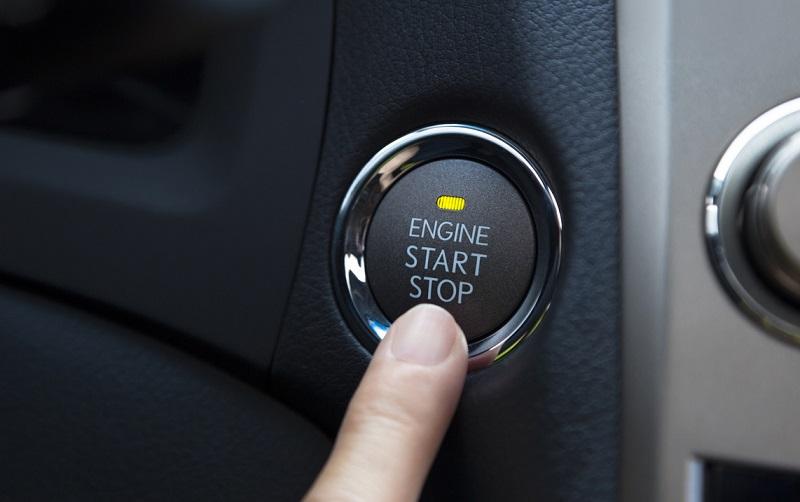How to Turn on a Car
To turn on a car, insert the key into the ignition and turn it clockwise. Starting a car is a simple process that requires the key to be turned in the ignition to engage the engine.
When you follow these steps, your vehicle will start running smoothly and be ready for your journey. As a driver, knowing how to start your car is essential for your daily commute or any travel plans. Whether you are a new or experienced driver, understanding the basic steps of turning on a car is necessary.
By following these instructions, you can ensure a safe and efficient start to your driving experience. Let’s delve into the key steps involved in starting your vehicle and getting you on the road effortlessly.

Credit: www.wikihow.com
Getting Ready
Before you start your car and hit the road, there are a few important steps you need to take to ensure a safe and comfortable driving experience. Getting ready involves checking the key to ensure it is in proper working condition, as well as adjusting the seat and mirrors to achieve the right position and visibility. This section will guide you through the process step by step.
Checking The Key
Before inserting the key into the ignition, it’s crucial to check its condition to avoid any unexpected malfunctions. Follow these simple steps to ensure the key is ready for use:
- Inspect the key for any signs of damage, such as bends or cracks.
- Ensure the key is clean and free from any debris that could affect its functionality.
- Check that the key is the correct one for your car model, as using the wrong key can damage the ignition.
By taking these precautions, you can minimize the risk of encountering issues while starting your car.
Adjusting The Seat And Mirrors
Proper seat and mirror adjustments are crucial for your safety and comfort during your drive. Follow these guidelines to attain the ideal position:
Seat Adjustment:
- Sit upright with your back against the seat and ensure both feet comfortably reach the pedals.
- Adjust the seat’s position by using the lever provided, moving it forward or backward until you can comfortably reach the steering wheel.
- Check that there is enough clearance between your head and the car’s ceiling, preventing any discomfort or potential injury in case of sudden stops.
Mirror Adjustment:
Proper mirror adjustment is essential to eliminate blind spots and enhance your overall visibility. Follow these steps to achieve the correct mirror positions:
- Adjust the rearview mirror so that you can clearly see the entire rear window.
- Adjust the side mirrors so that they cover the blind spots and provide a view of the surrounding traffic.
- Ensure the mirrors are positioned to minimize the need for head movements, allowing you to maintain focus on the road ahead.
By positioning yourself correctly and adjusting the mirrors accordingly, you’ll optimize your visibility and enhance your driving experience.
Starting The Engine
Starting the engine of a car is an essential skill for every driver. Follow these simple steps to turn on your vehicle and get moving:
Turning The Key
- Insert the key into the ignition slot.
- Turn the key clockwise until you hear the engine start.
Depressing The Clutch (manual Transmission)
- Press down on the clutch pedal with your foot.
- Keep the clutch depressed while turning the key to start the engine.
Remember to follow these steps carefully to ensure a smooth start and drive. Happy motoring!
Driving Off
Releasing The Parking Brake
Make sure to fully disengage the parking brake before attempting to drive.
Shifting The Gear (manual Transmission)
Shift smoothly from neutral to first gear while releasing the clutch pedal.

Credit: auto.howstuffworks.com
Adjusting To Traffic
Once you’ve successfully turned on your car, it’s crucial to assess the traffic around you and adjust accordingly. This ensures a smooth and safe journey for yourself and other drivers. Here are some important steps to follow when adjusting to traffic:
Using Signals
One of the first things you should do when turning on your car is to check that your signals are functioning properly. Using turn signals informs other drivers of your intentions, allowing them to anticipate your actions. It’s important to remember that turn signals should be activated at least 100 feet before making a turn.
Here’s how to use your turn signals:
- Check that your signal lever is in the correct position: up for right turns and down for left turns.
- Before changing lanes or making a turn, check your mirrors to ensure it’s safe to proceed.
- Activate the corresponding turn signal, ensuring it’s blinking steadily.
Observing Traffic Rules
Observing and adhering to traffic rules is crucial for your safety and others on the road. Here are some essential traffic rules to keep in mind when adjusting to traffic:
- Observe the posted speed limit and adjust your car’s speed accordingly. Remember, exceeding the speed limit can result in accidents and penalties.
- Pay close attention to traffic signs, including stop signs, yield signs, and one-way signs. Following these signs ensures you’re moving in the correct direction and helps prevent potential collisions.
- Always yield the right-of-way to other drivers and pedestrians, especially at intersections.
- Maintain a safe following distance behind the vehicle in front of you. This allows you enough time to react if the car in front suddenly slows down or stops.
- Be aware of traffic signals and respond promptly and appropriately to green, yellow, and red lights.
By following these traffic rules, you can significantly reduce the risk of accidents and ensure a smoother and more efficient flow of traffic for everyone.
Arriving Safely
Arriving safely is a critical part of the driving process. It involves more than just turning on a car, but also parking, turning off the engine, and considering the safety of yourself and others. Following the correct steps ensures a smooth and safe journey.
Parking The Car
When parking the car, ensure that you are in a designated parking spot. Turn off the engine and engage the parking brake to prevent the car from rolling. Also, remember to remove the keys from the ignition to avoid any potential issues with theft or accidental movement of the vehicle.
Turning Off The Engine
After arriving safely, it’s crucial to turn off the engine properly. Shift the car into park or neutral, apply the parking brake, and then turn off the ignition. Once the engine is off, remove the keys and remember to gather all personal belongings before exiting the vehicle.

Credit: carfromjapan.com
Frequently Asked Questions For How To Turn On A Car
How Do You Start Your Car?
To start your car, insert the key into the ignition. Turn it clockwise to the “on” position. Then, put your foot on the brake and shift the gear into “P” or “N”. Finally, turn the key to start the engine.
How Do You Properly Turn In A Car?
To properly turn in a car, follow these guidelines: prepare necessary documents, clean and inspect the vehicle, remove personal belongings, cancel insurance, and return the car to the designated location. Remember to fulfill any additional requirements specified by your rental or leasing agreement.
How Do You Turn On The Ignition In A Car?
To turn on the ignition in a car, insert the key and turn it clockwise. Press the brake pedal, then push the ignition button or turn the key further to start the engine.
How Do I Start My Automatic Car?
To start an automatic car, press the brake pedal, turn the ignition key or push the start button, then shift into drive or reverse.
How Do I Start A Car?
To start a car, insert the key, turn it clockwise, and press the clutch or brake.
What Should I Do Before Turning On A Car?
Check the fuel level, ensure the car is in park or neutral, and fasten your seatbelt.
Why Won’t My Car Turn On?
Possible reasons include a dead battery, faulty starter, or issues with the ignition switch.
Conclusion
To conclude, starting a car is a simple process that involves a few key steps. By following the guidelines outlined in this blog post, you can confidently turn on your car without any issues. Remember to always prioritize safety and maintenance, as a well-functioning car ensures a smooth ride.
Whether you’re a new driver or just need a refresher, now you have the knowledge and confidence to turn on a car with ease. Happy driving!


